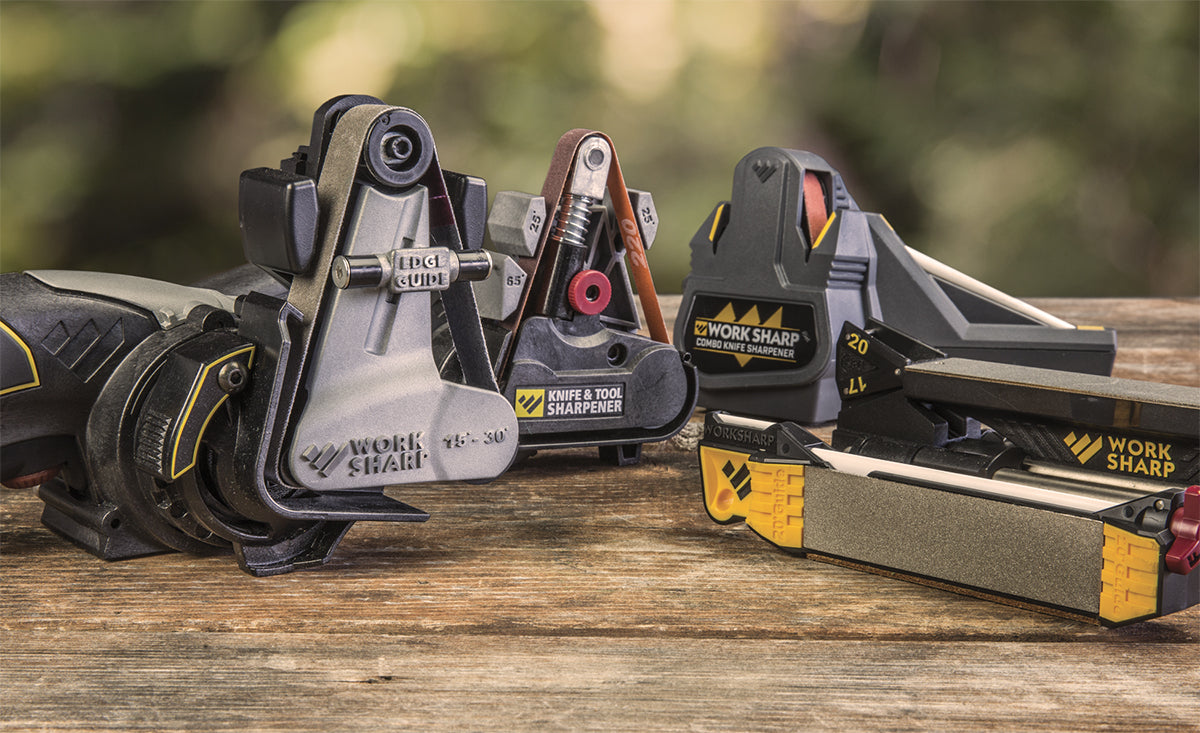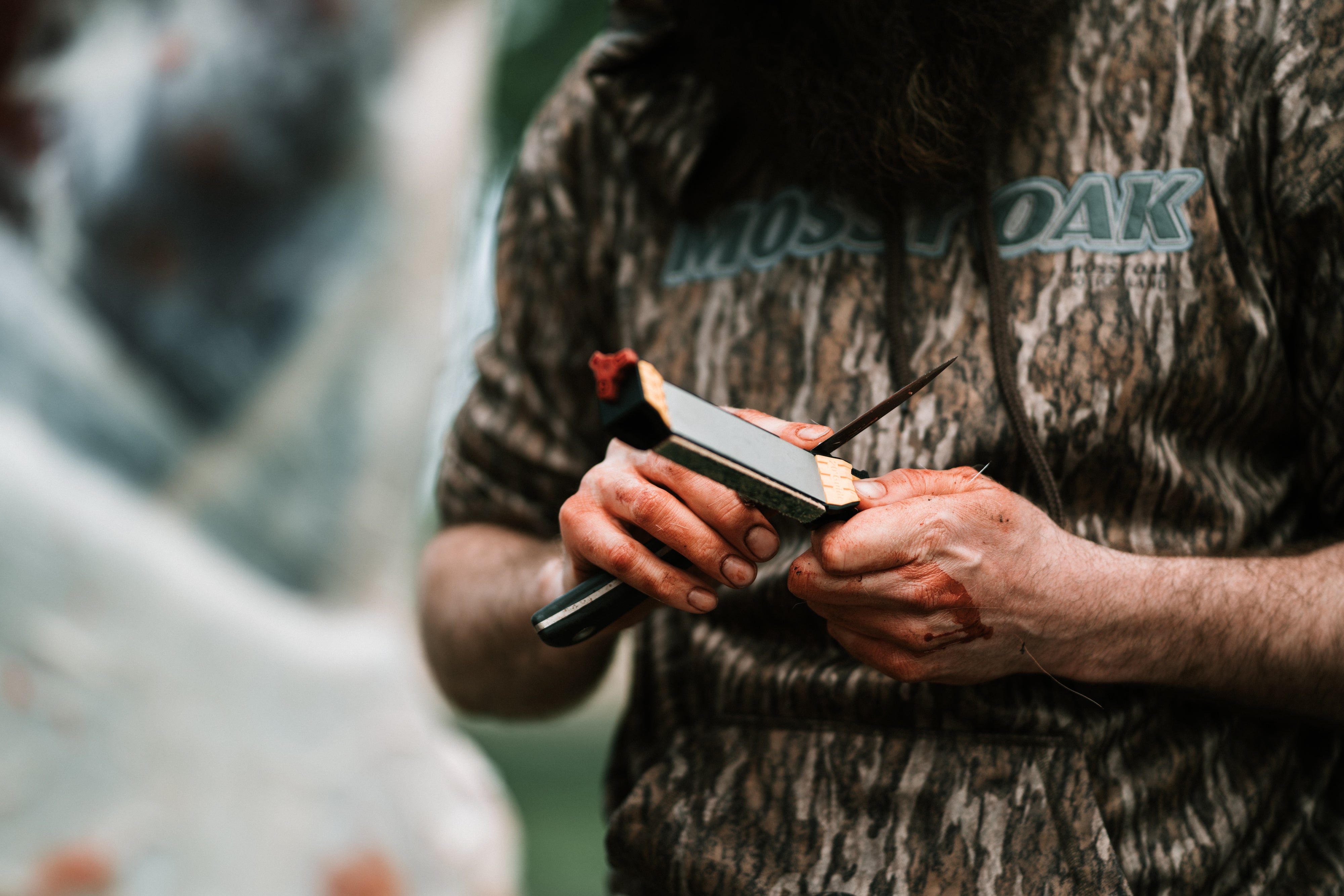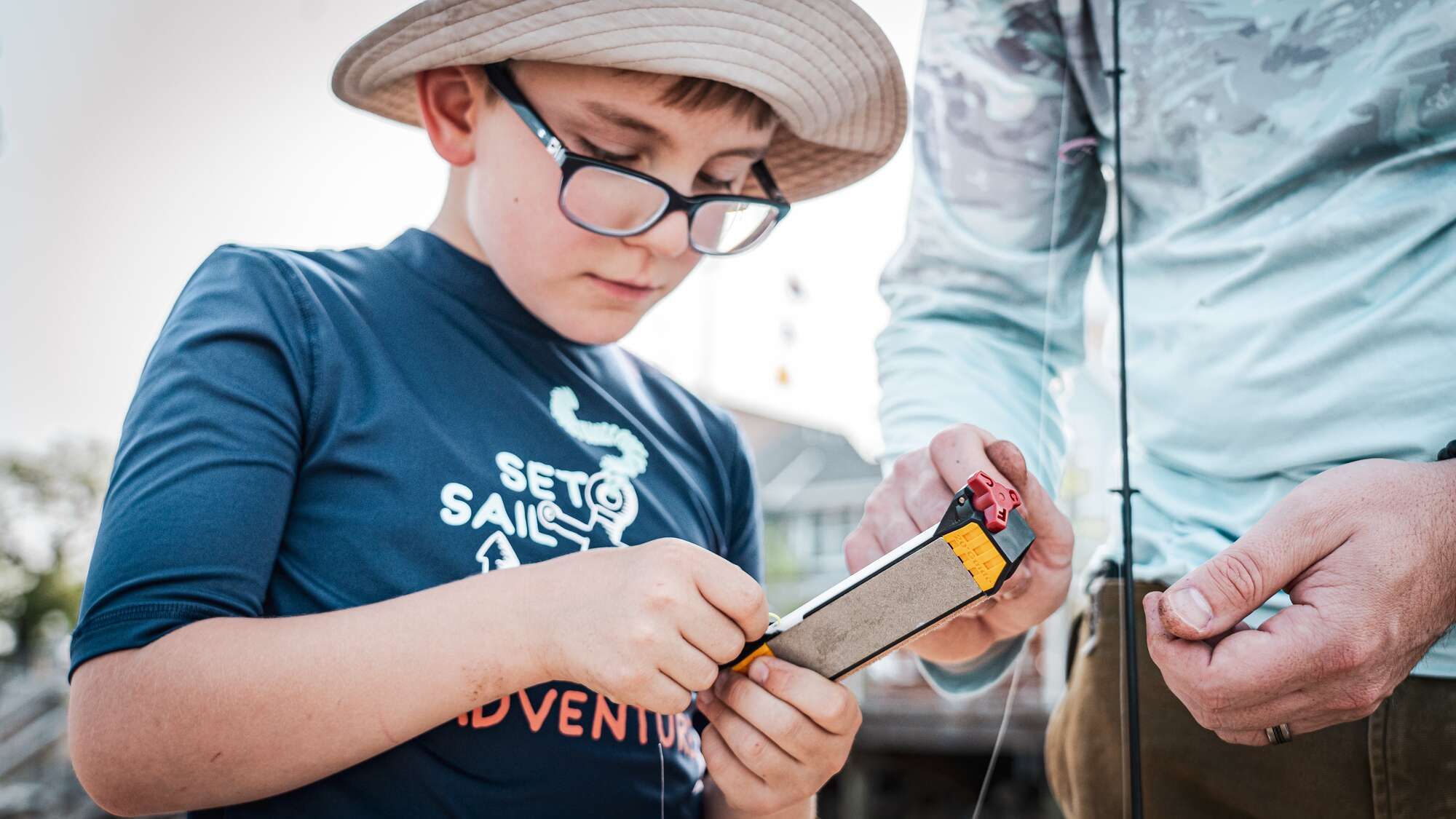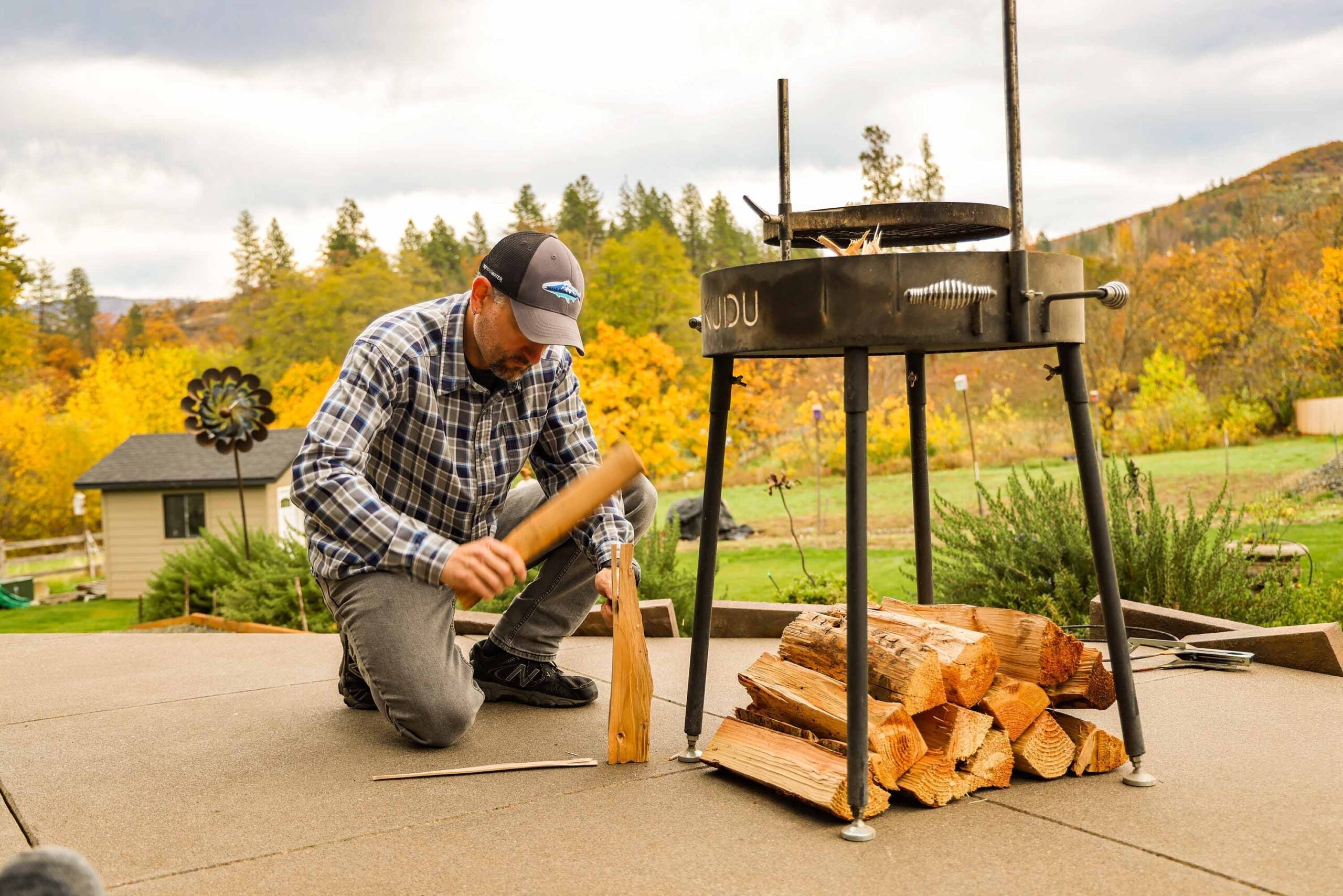
Owning a Work Sharp provides endless solutions for sharpening all your knives and tools. With all that opportunity, questions are bound to arise. We checked in with our Service Team to learn what popular questions customers are asking when using a Work Sharp Knife & Tool Sharpener. Here are the Top 10 questions most frequently asked:
Can I use an inverter with the WSKTS-KO?
We've found using a quality inverter with a true continuous output above 400-watts works for most light sharpening and honing.
I live outside North America – can I use my Work Sharp Sharpener with an adapter?
Work Sharp Sharpeners sold in the United States and Canada are designed and manufactured for 115V 60 Hz power supplies only. We assemble and ship product for a specific region's power needs to many distributors around the world. We want to make sure you have the correct product to safely and effectively sharpen your tools.
Using a 115V machine in a location that uses 230V power sources not only voids your warranty, but also increases the chance of failure and reduces the life and performance of your tool. We want you to purchase the proper tool so you can experience the optimal performance and life of our tools.
Using a simple plug adapter and no other transformation or conversion from 230v to 115v leaves the unit running on twice the rated voltage—the motor runs very hot, very fast and for a very short time before it destroys itself. A plug adapter allows the US-plug to fit into your receptacle, but doesn’t impact the power provided to the unit.
Click here to find a distributor in your area.
What is the range of the variable speed motor on the WSKTS-KO?
The speed is measured in surface feet per minute (SFM), which is the length of abrasive belt that passes over the blade in one minute. The machine uses a variable speed control motor that ranges from 1200 SFM to 2800 SFM.
Why shouldn’t I lock the power button when I’m sharpening knives?
With the motor running full time, the abrasive belt is grinding the heal of the blade as you are lowering it into the angle guide. This additional exposure to the abrasive can grind the heal more than the rest of the blade. Over time, the extra exposure to the abrasive will create an unintended ‘recurve’.
Place, Power-on & Pull. is the best method when using our sharpener to maintain factory blade profiles.
Tell me more about different finished edge types?
- A toothy edge is a great general purpose kitchen knife edge for cutting vegetables, and great for pocket knives used for cutting rope, cardboard, and other regular duty tasks.
- Shaving sharp is best in the kitchen for cutting meat and fish, or if your pocket knife sees light or delicate cutting tasks.
- Shiny sharp is fun to achieve, is super sharp, but does not tolerate abuse and will lose its cutting efficiency quicker.
Multiple edge finishes can be applied to a single blade, just as some blades have partial serrations.
How do I sharpen ceramic knives?
To sharpen ceramic, use the optional diamond belts and use the same techniques as sharpening steel blades. Ceramic knives will not create a burr to let you know when to switch sides, so be sure to use the same number of strokes for each side to ensure a consistent bevel.
NOTE: The diamond belts were developed specifically for repairing sharpening ceramic blades. Do NOT use the diamond belts to sharpen metallic knives, as the metal will clog the belts and render them useless.
Click for Diamond belts for The Original Knife & Tool Sharpener
Click For Diamond belts for The Knife & Tool Sharpener | Ken Onion Edition
How do I sharpen my Tanto knives?
- Tanto blades require 100% of your attention.
- Sharpen each edge as an individual blade. Part 1 is from the heal of the main cutting edge to the transition point. Part 2 is from tip to the transition point of cutting edge. Do not sharpen past the edge transition angle or you risk rounding it off. Again, Tanto blades require 100% of your attention to avoid rounding off the transitioning angle.
You can also freehand your Tanto on your Ken Onion Edition without the sharpening guide or use the Blade Grinding Attachment. Freehand sharpening takes much more practice than sharpening with guides and as always, practice with "junk" knives first to develop your skills.
Can I bench mount my Ken Onion?
Yes, you can. There are two 1/4" coarse threaded holes (20 threads per inch) on the bottom of the machine. (Note: Some older machines may have only one threaded hole.)
How do I keep my blade face scratch-free?
- Stay clean! Keep the guide and blade clean after using each grit. An old paint brush works great for this.
- Use little to no pressure against the outside edge (against the angle guide). Use it to set the angle, then ‘hover’ the blade through at the set angle.
- The best protection from loose grit is to cover the face of your blades with tape that is easily removable, exposing just the bevel while sharpening.
What is the difference between the Original Knife & Tool Sharpener and the Ken Onion Edition?
- The Ken Onion Edition features 3 key upgrades:
- Adjustable angle guides from 15° to 30° (vs. fixed guides of 20° and 25°)
- ¾” x 12” belts, including many optional specialty grits (vs. ½” x 12” belts)
- Variable-speed, heavy duty motor (vs. 2-speed (full-time and intermittent), fixed RPM motor)
Have more questions about sharpening? Find more answers, sharpening tips & tricks here.
Our in-house Service Team members are truly product experts, honing their skills with rigorous training so they are equipped to answer any question knowledgeably. Feel free to Contact us.
Have feedback? We welcome customer feedback as it helps us improve existing products and learn what our customers’ needs and problems are. We work closely with our Quality Team to make sure we are allocating resources as effectively as possible so we continue to deliver high-value sharpening solutions. We hope all of our customers say, “Wow!” after interacting with us.






